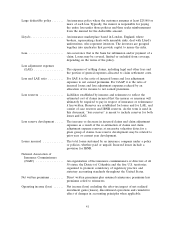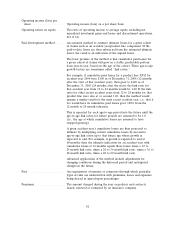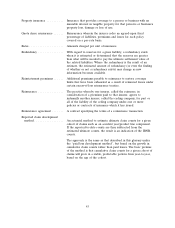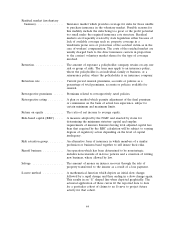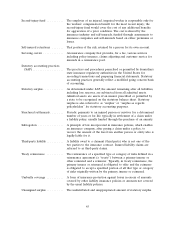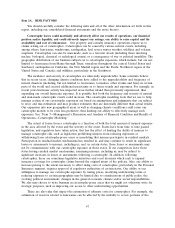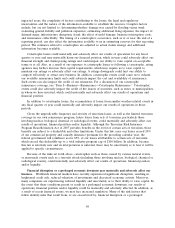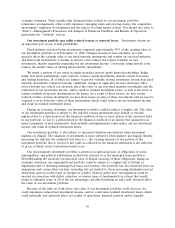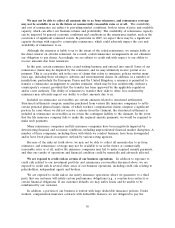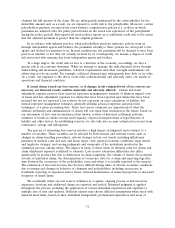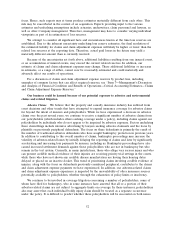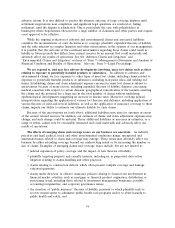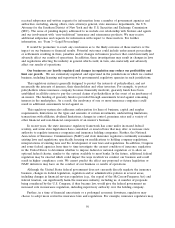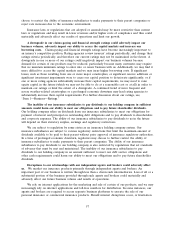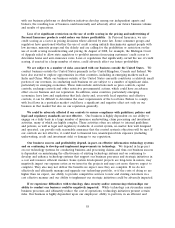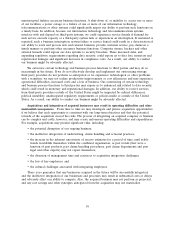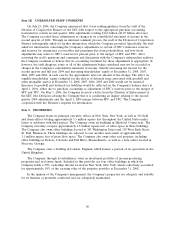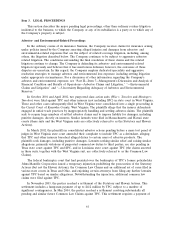Travelers 2008 Annual Report Download - page 63
Download and view the complete annual report
Please find page 63 of the 2008 Travelers annual report below. You can navigate through the pages in the report by either clicking on the pages listed below, or by using the keyword search tool below to find specific information within the annual report.claimant the full amount of the claim. We are subsequently reimbursed by the contractholder for the
deductible amount and, as a result, we are exposed to credit risk to the policyholder. Moreover, certain
policyholders purchase retrospectively rated workers’ compensation policies (i.e., policies in which
premiums are adjusted after the policy period based on the actual loss experience of the policyholder
during the policy period). Retrospectively rated policies expose us to additional credit risk to the extent
that the adjusted premium is greater than the original premium.
In accordance with industry practice, when policyholders purchase insurance policies from us
through independent agents and brokers, the premiums relating to those policies are often paid to the
agents and brokers for payment to us. In most jurisdictions, the premiums will be deemed to have been
paid to us whether or not they are actually received by us. Consequently, we assume a degree of credit
risk associated with amounts due from independent agents and brokers.
To a large degree, the credit risk we face is a function of the economy; accordingly, we face a
greater risk in an economic downturn. While we attempt to manage the risks discussed above through
underwriting and investment guidelines, collateral requirements and other oversight mechanisms, our
efforts may not be successful. For example, collateral obtained may subsequently have little or no value.
As a result, our exposure to the above credit risks could materially and adversely affect our results of
operations and financial condition.
If actual claims exceed our loss reserves, or if changes in the estimated level of loss reserves are
necessary, our financial results could be materially and adversely affected. Claims and claim
adjustment expense reserves (loss reserves) represent management’s estimate of ultimate unpaid costs
of losses and loss adjustment expenses for claims that have been reported and claims that have been
incurred but not yet reported. Loss reserves do not represent an exact calculation of liability, but
instead represent management estimates, generally utilizing actuarial expertise and projection
techniques, at a given accounting date. These loss reserve estimates are expectations of what the
ultimate settlement and administration of claims will cost upon final resolution in the future, based on
our assessment of facts and circumstances then known, reviews of historical settlement patterns,
estimates of trends in claims severity and frequency, expected interpretations of legal theories of
liability and other factors. In establishing reserves, we also take into account estimated recoveries from
reinsurance, salvage and subrogation.
The process of estimating loss reserves involves a high degree of judgment and is subject to a
number of variables. These variables can be affected by both internal and external events, such as
changes in claims handling procedures; adverse changes in loss cost trends, including inflationary
pressures in medical costs and auto and home repair costs; general economic conditions; legal trends
and legislative changes; and varying judgments and viewpoints of the individuals involved in the
estimation process, among others. The impact of many of these items on ultimate costs for claims and
claim adjustment expenses is difficult to estimate. Loss reserve estimation difficulties also differ
significantly by product line due to differences in claim complexity, the volume of claims, the potential
severity of individual claims, the determination of occurrence date for a claim and reporting lags (the
time between the occurrence of the policyholder event and when it is actually reported to the insurer).
The estimation of loss reserves may also be more difficult during times of adverse economic conditions
due to unexpected changes in behavior of claimants and policyholders, including an increase in
fraudulent reporting of exposures and/or losses, reduced maintenance of insured properties or increased
frequency of small claims.
We continually refine our loss reserve estimates in a regular, ongoing process as historical loss
experience develops and additional claims are reported and settled. Informed judgment is applied
throughout the process, including the application of various individual experiences and expertise to
multiple sets of data and analyses. Different experts may choose different assumptions when faced with
material uncertainty, based on their individual backgrounds, professional experiences and areas of
51


